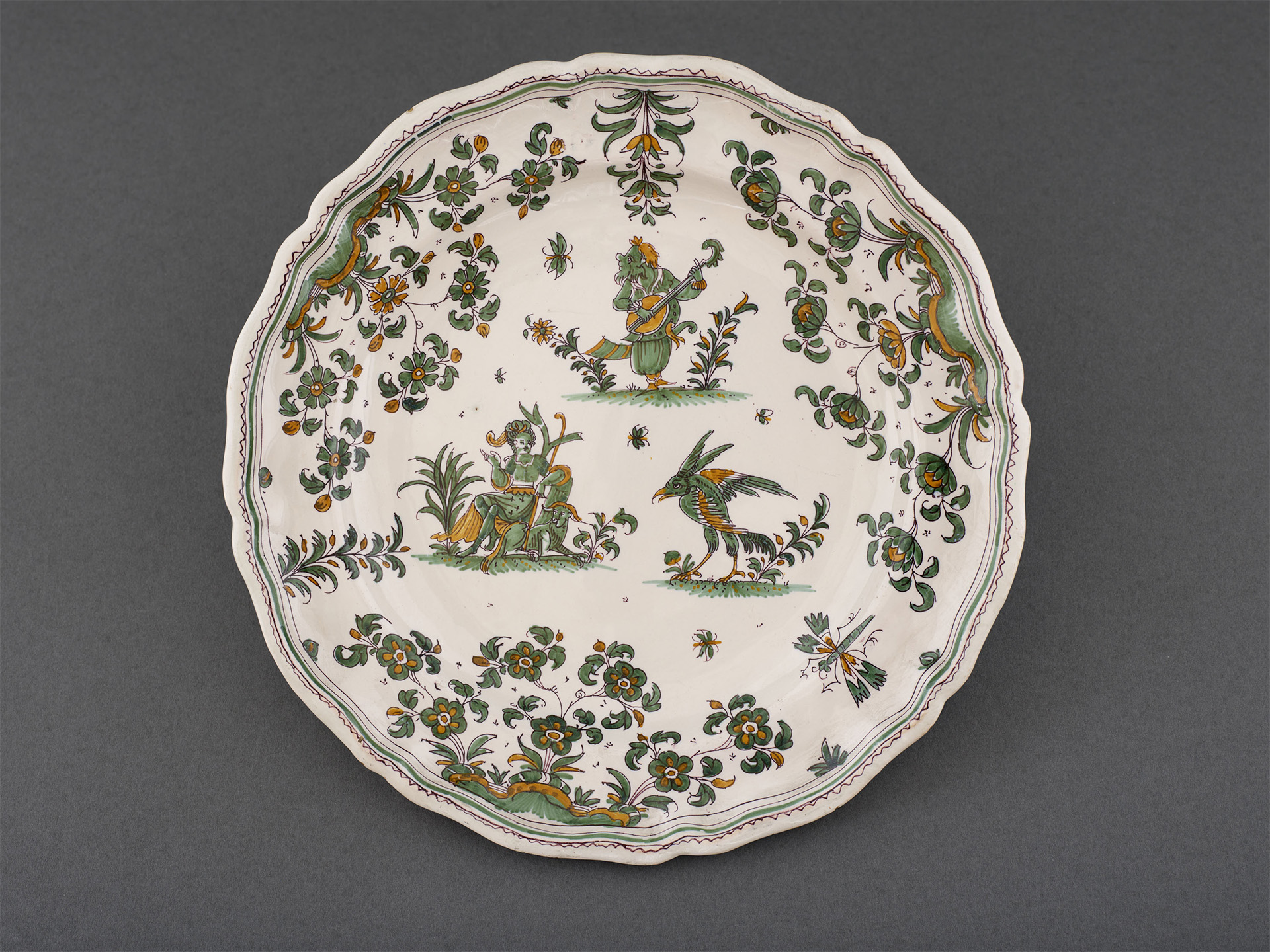
Faïencerie Olérys et Laugier. Moustiers (Francia)
Plate
"À grotesques" decoration (1745-1750)
WORK INFORMATION
Ceramic, green-and orange-decorated earthenware, diam. 25 cm
Moustiers is a small village in the mountains of the French Prealps which became famous thanks to a dynasty of potter-painters, the Clérissy family. In 1677, Pierre Clérissy I (active until 1728), an accomplished earthenware painter, founded a pottery that was continued by his son Antoine (1728-1732) and by Pierre Clérissy II until 1783. The promulgation of various royal edicts at the end of the 17th and beginning of the 18th century favoured the production of pottery in Moustiers. These edicts prohibited the use of gold and silver tableware which, during this period, was sacrificed for the benefit of the State in order to pay for wars, trade with the Orient and excessive court expenses. From then on, tableware made here was successfully marketed to aristocratic families, not only in the south of France, but throughout the country.
One of the artists who stood out among the potters of this town – for his use of polychromy and a new ornamental repertoire in the Rococo style – was Joseph Olérys (1697-1749). This painter, a native of Marseilles who trained in Moustiers, was hired by the 9th Count of Aranda in 1727 when the latter founded the Alcora manufactory, where the artist was employed for ten years. In 1740, Olérys returned to Moustiers and teamed up with his brother-in-law Jean-Baptiste Laugier to set up his own factory there. He was responsible for the creation of the grotesque compositions, an imaginary world inhabited by fantastic beings – half-animal, half-human – who often appear playing musical instruments or dancing. These figures are arranged in perfect balance with the bouquets of potato flowers or with the branches of chrysanthemums and the insects that surround them.
This circular plate with a lobed rim is decorated with a composition characteristic of this series, in which flowering branches and insects in shades of green and orange surround three central grotesque figures: a mandolin player, a shepherdess seated with her sheep, and a fantastic bird.

